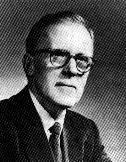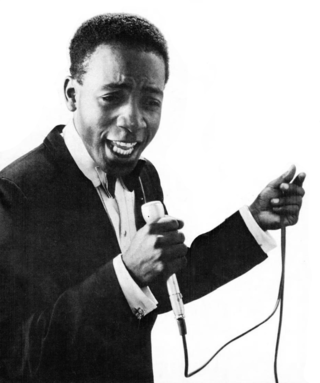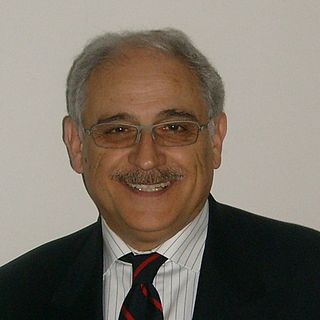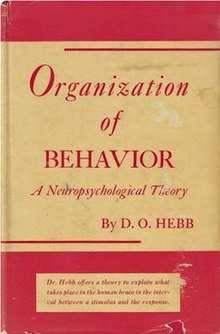Organization development (OD) is the study and implementation of practices, systems, and techniques that affect organizational change. The goal of which is to modify a group's/organization's performance and/or culture. The anizational changes are typically initiated by the group's stakeholders. OD emerged from human relations studies in the 1930s, during which psychologists realized that organizational structures and processes influence worker behavior and motivation.

The Language Instinct: How the Mind Creates Language is a 1994 book by Steven Pinker, written for a general audience. Pinker argues that humans are born with an innate capacity for language. He deals sympathetically with Noam Chomsky's claim that all human language shows evidence of a universal grammar, but dissents from Chomsky's skepticism that evolutionary theory can explain the human language instinct.
Systemic bias is the inherent tendency of a process to support particular outcomes. The term generally refers to human systems such as institutions. Systemic bias is related to and overlaps conceptually with institutional bias and structural bias, and the terms are often used interchangeably.

Donald Olding Hebb was a Canadian psychologist who was influential in the area of neuropsychology, where he sought to understand how the function of neurons contributed to psychological processes such as learning. He is best known for his theory of Hebbian learning, which he introduced in his classic 1949 work The Organization of Behavior. He has been described as the father of neuropsychology and neural networks. A Review of General Psychology survey, published in 2002, ranked Hebb as the 19th most cited psychologist of the 20th century. His views on learning described behavior and thought in terms of brain function, explaining cognitive processes in terms of connections between neuron assemblies.
Hebbian theory is a neuropsychological theory claiming that an increase in synaptic efficacy arises from a presynaptic cell's repeated and persistent stimulation of a postsynaptic cell. It is an attempt to explain synaptic plasticity, the adaptation of brain neurons during the learning process. It was introduced by Donald Hebb in his 1949 book The Organization of Behavior. The theory is also called Hebb's rule, Hebb's postulate, and cell assembly theory. Hebb states it as follows:
Let us assume that the persistence or repetition of a reverberatory activity tends to induce lasting cellular changes that add to its stability. ... When an axon of cell A is near enough to excite a cell B and repeatedly or persistently takes part in firing it, some growth process or metabolic change takes place in one or both cells such that A’s efficiency, as one of the cells firing B, is increased.

James Gardner March was an American political scientist, sociologist, and economist. A professor at Stanford University in the Stanford Graduate School of Business and Stanford Graduate School of Education, he is best known for his research on organizations, his seminal work on A Behavioral Theory of the Firm, and the organizational decision making model known as the Garbage Can Model.

Richard H. Thaler is an American economist and the Charles R. Walgreen Distinguished Service Professor of Behavioral Science and Economics at the University of Chicago Booth School of Business. In 2015, Thaler was president of the American Economic Association.
Organizational behavior or organisational behaviour is the "study of human behavior in organizational settings, the interface between human behavior and the organization, and the organization itself". Organizational behavioral research can be categorized in at least three ways:

Robert Alvin Von Hebb was an American R&B and soul singer, musician, songwriter, recording and performing artist, best known for his 1966 hit "Sunny".
A neuronal ensemble is a population of nervous system cells involved in a particular neural computation.

A system is a group of interacting or interrelated elements that act according to a set of rules to form a unified whole. A system, surrounded and influenced by its environment, is described by its boundaries, structure and purpose and is expressed in its functioning. Systems are the subjects of study of systems theory and other systems sciences.

Doug McAdam is Professor of Sociology at Stanford University. He is the author or co-author of over a dozen books and over fifty articles, and is widely credited as one of the pioneers of the political process model in social movement analysis. He wrote one of the first books on the theory in 1982 when analyzing the U.S. Civil Rights Movement: Political Process and the Development of the Black Insurgency 1930-1970. His other book Freedom Summer won the C. Wright Mills Award in 1990. He served as the director of the prestigious Center for Advanced Study in the Behavioral Sciences between 2001 and 2005. He was elected to the American Academy of Arts and Sciences in 2003.

John Pourdehnad is an American organizational theorist, and consultant. He is associate director of the Ackoff Center for Advancement of Systems Approaches (ACASA), and Affiliated Faculty in the Organizational Dynamics Graduate Program at the University of Pennsylvania.

Albert Stanley Bregman was a Canadian academic and researcher in experimental psychology, cognitive science, and Gestalt psychology, primarily in the perceptual organization of sound.
Sara J. Shettleworth is an American-born, Canadian experimental psychologist and zoologist. Her research focuses on animal cognition. She is professor emerita of psychology and ecology and evolutionary biology at the University of Toronto.

Mark Richard Rosenzweig was an American research psychologist whose research on neuroplasticity in animals indicated that the adult brain remains capable of anatomical remodelling and reorganization based on life experiences, overturning the conventional wisdom that the brain reached full maturity in childhood.

Why Freud Was Wrong: Sin, Science and Psychoanalysis is a book by Richard Webster, in which the author provides a critique of Sigmund Freud and psychoanalysis, and attempts to develop his own theory of human nature. Webster argues that Freud became a kind of Messiah and that psychoanalysis is a pseudoscience and a disguised continuation of the Judaeo-Christian tradition. Webster endorses Gilbert Ryle's arguments against mentalist philosophies in The Concept of Mind (1949), and criticizes many other authors for their treatment of Freud and psychoanalysis.
The CPA Donald O. Hebb Award for Distinguished Contributions to Psychology as a Science is an annual award presented by the Canadian Psychological Association (CPA).
The Hebb–Williams maze is a maze used in comparative psychology to assess the cognitive ability of small animals such as mice and rats. It was developed by Donald O. Hebb and his student Kenneth Williams in 1946, when both men were working at Queen's University at Kingston. A modified version, intended specifically to measure the intelligence of rats, was described in a 1951 paper by Hebb's students Rabinovitch and Rosvold. This modified version is the most commonly used in research where the aim is to measure animals' problem-solving abilities. In general, animals are tested in the Hebb–Williams maze's twelve separate mazes after acclimating to six practice mazes, though some studies have not used all twelve testing mazes. The two main procedures for the maze are the reward conditioning task and the water escape task. The maze has been used to investigate strain and sex differences in mice. A 2018 study argued that the maze is potentially useful for translational research in fragile X syndrome in humans.
William Robert Thompson was a French-born Canadian psychologist. With John L. Fuller, he co-authored a 1960 book entitled Behavior Genetics that is credited with launching the field of behavioral genetics.











